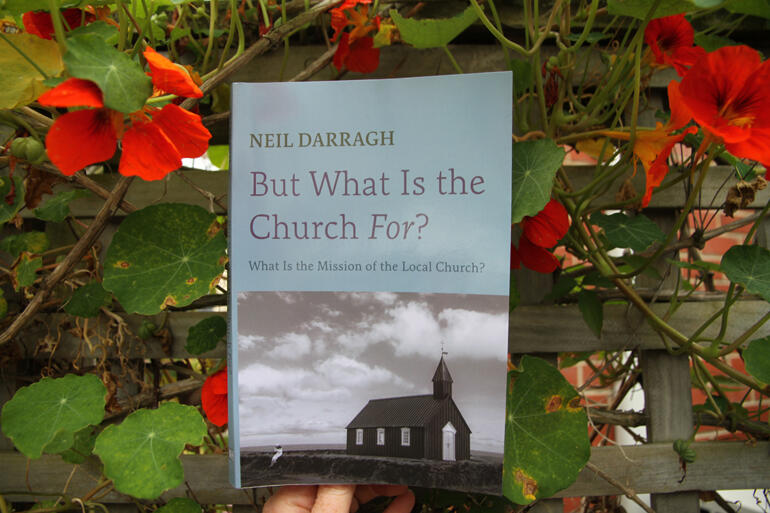
In his latest book, Aotearoa New Zealand theologian Neil Darragh looks at how churches that rely on 'belonging' out of cultural allegiance, Sunday morning habits or commitment to an institution, may fail to recognise or act upon their most fruitful resources for mission.
In this book, Darragh looks at a wide ecumenical mix of theological viewpoints to decipher how a local church can shift toward seeing itself as a community of citizen theologians who share in God’s mission to transform the world.
Darragh forsees churches that view their mission as following the Holy Spirit in its work in the world to enhance the wellbeing of all who live within it. This book places a particular focus on mission that not only works for human wellbeing across diverse cultures, but for ecological wellbeing for the earth and all in God’s Creation.
Darragh’s “But What Is the Church For?” takes an ecumenical slice of contemporary mission theology that reveals how a local Christian community’s ecclesiology – its self-understanding of what its members are and do as “the church” – flows naturally from their unspoken aims and beliefs about the primary functions of “a church”.
Darragh shows that a church that starts with an “attractional” focus – styling itself as appealing to others and offering desirable religious products to its potential members – shapes itself very differently to a missional church.
While the attractional model can be narcissistic and competitive, Darragh warns, a missional church cares not for its own exclusive value, but looks for where the Spirit is already at work outside church walls. This means its members are always on the lookout to collaborate in others’ efforts to bring about the realm of God on earth.
“This book is not about a church looking inwards and worrying about itself, but a church looking outwards....that is part of that much bigger, much more exhilarating project of the evolving realm of God,” writes Darragh.
As a contextual theologian, Darragh raises questions of how far some of the northern hemisphere theologies can apply in our Pacific region. And as a Catholic priest, he considers many viewpoints but still writes with love to the local parish church - in the hopeful expectation that every church can shift its missional lens.
In later chapters Darragh picks up on the importance of Christian faith as a source of liberation from unjust social structures, particularly for indigenous Christians and for Christians living in both secular and pluralist societies.
In “But What Is the Church For?” Darragh also emphasises the need for Gospel inculturation – where Christians of every culture interrogate their own cultural heritage to test where it does or does not align with the peace, justice and fullness of life they hope for in God’s realm.
Darragh’s book, “But What Is the Church For? – What is the Mission of the Local Church?” concludes with a self-review section for churches who want to unearth their hidden theologies of mission as way to enliven future ministry in their locality.
‘But What is the Church For?” by Neil Darragh is 182 pages long and is available for NZD $36.00 in paperback or ebook from Wipf and Stock or it can be purchased in NZ for a book launch price of NZ$30.00 from Accent Publications. (Launch offer is for a limited time only).

















Comments
Log in or create a user account to comment.